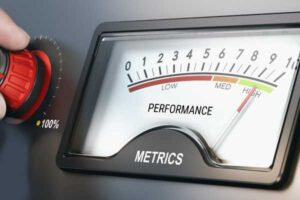Vou want to (re)organise your office or production workshop? The 5S method is an effective visual management tool for optimising and maintaining your working environment: orderly, productive and safe. So what does this continuous improvement approach involve? What are the benefits? What are the best practices for implementing the method? How do you design your 5S pilot worksite? Guy Besson, an expert in the organisation and reliability of industrial maintenance, explains.

The 5S method was devised in 1991 by Takashi Osada for Toyota. Applied in manufacturing units (production lines, offices, storage and maintenance areas), the 5S method is now increasingly used in other sectors such as the hospital, hotel and construction industries.
A continuous improvement approach
The 5S are the Japanese initials for the following 5 steps:
| 1 | Seiri | Sort |
| 2 | Seiton | Ranger |
| 3 | Seiso | Clean |
| 4 | Seiketsu | Standardise |
| 5 | Shitsuke | Improve |
The method is used as part of a continuous improvement approach. In fact, many companies start their continuous improvement programmes with 5S. This method forms the basis of all the other tools, such as the total productive maintenance (TPM) and the lean.
"The 5S method is the starting point for lean management.
An easy-to-implement group effort, 5S creates an environment in which staff are sensitive to errors and anomalies. Employees are therefore able to distinguish between normal and abnormal conditions at a glance. Losses and problems are quickly identified and errors are minimised. As a result, work areas are easier to manage and maintain.
Read also : Lean manufacturing: tools, limits and challenges
The benefits of the 5S method
Working very well in offices and workshops, the 5S method makes it possible toconstantly optimising working conditions and organisation. A method also appreciated by customers. The result: greater trust, a positive corporate image and improved profitability.
In detail, here are the benefits of the 5S method:
- Improves safety and quality
- Eliminates or reduces losses (time, wastage, overstocking, etc.)
- Allows operators to listen more effectively
- Improves working conditions:
- Reducing stock levels improves and airs the workspace
- Promotes maintainability of equipment and machinery
- Reinforces ownership and motivation in the workplace
- This improves productivity
- Help in implementing other continuous improvement tools
From sorting to cleaning the workplace, best practices
We are talking about 5S worksite. For each stage, good practice should be followed, always in three phases: preparation, improvement and operation.
Some essential practices throughout the project: taking fixed-point before-and-after photos of the area, creating an activity monitoring table, carrying out progress audits.
Step 1: Sort and dispose of unnecessary items in the workplace
First of all, you have to prepare the site (name of the workshop, inventory of the machines): mark out the area, set up and train the team, define the operating rules (frequency, duration of the site), install an activity sign.
Then comes the analysis to make the area safe: shutting down and locking down machines, preparing and ensuring the wearing of personal protective equipment, marking out the area, taking before-and-after photos of the area. Next, we sort out the items that are unusable, broken, faulty, obsolete, redundant or out of date, and create a decision-holding area: all the items that we don't know what to do with or who they belong to are numbered and labelled. If no one claims them after a month, they are thrown out. A table is set up to define priorities in terms of frequency of use. Finally, the information is entered into an operating table.
How do you measure the results of the 5S method? A progress audit to move on to the next stage.
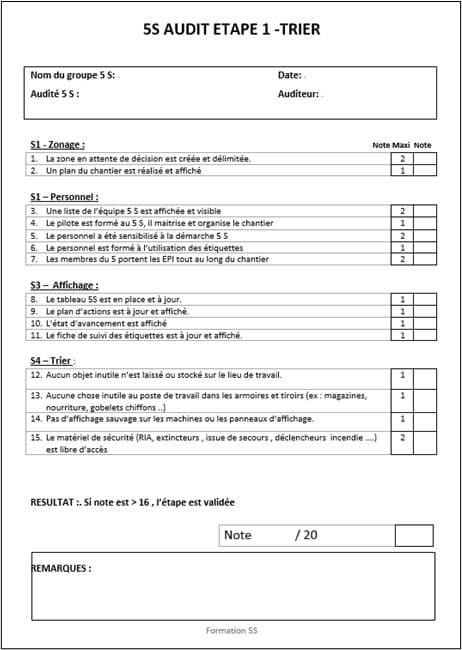
Example
In offices or workshops, we ask ourselves which objects are useful at the workstation. If in doubt, if the object doesn't seem useful, we stick a red label on it with the status "awaiting decision".
Step 2: Store for easy, accessible use
This involves formalising and simplifying workflows: displaying office plans and representing movements using arrows. Rules are defined for the placement and storage of items according to several criteria: frequency of use, weight, ease of access, proximity. The aim is to ensure that the most frequently used items are placed close together. For greater efficiency, all items must be (re)allocated a logical and ergonomic location.
Examples
- Sort tools and medicines by category.
- Remove cupboard doors or use Plexiglas. Everything needs to be visible and open.
- Organise the folders by colour.
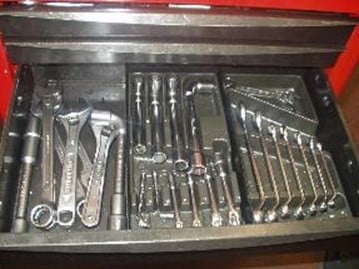
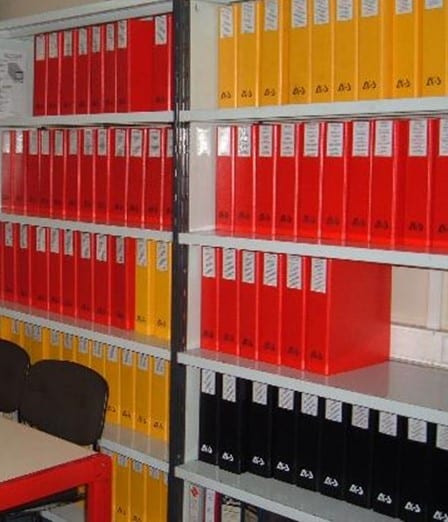
Adhesive tape or paint is used for the road markings.
Example
To demarcate the area in a warehouse, we mark the location of pallets and pallet trucks with tape.
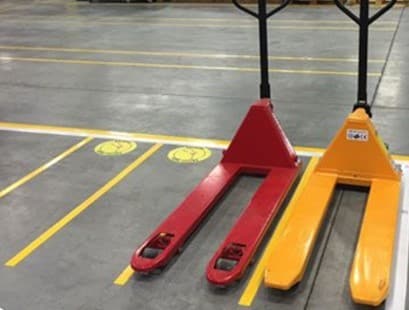
We also create cleaning kits (shovel, brush...) that are always placed in the same place.
Step 3: Clean the workplace regularly
We look for all sources of dirt. Stains and rust are removed (when this is difficult, experts can be called in). Then we repaint, reseal and change the lights (LEDs). No dirty machine can contribute to a clean room.
"Cleaning must be part of the daily routine.
The aim is to make the workspace a safe and pleasant place in which to be comfortable and productive.
Stage 4: standardising and maintaining 5S over the long term
This involves creating checklists and calendars for ensure the execution and improvement of the first three 'S's then maintain the method over the long term.
Establish standards and procedures to guarantee continuous improvement
Keeping the workplace clean and tidy is a real challenge, and can only be achieved if rules are established and followed. The first step in meeting this challenge is to draw up simple, visual cleaning standards as a group, followed by a timetable for carrying out the operations.
"Without a defined standard, there can be no improvement.
In detail, use photos and short instructions to help keep the reference point, using short, precise sentences. The photos should show areas that have been sorted and cleaned. Each sheet corresponds to an area and the frequency of cleaning should be indicated. The activity table where these cleaning standards are displayed must also be updated. Finally, we carry out another audit to move on to the fifth stage and plan the next site session.
"5S is part of our daily work.
Step 5: Improve
The first four phases have been implemented, and we now need to focus on maintaining what has been achieved.
The 5S method requires continuous maintenance to be effective in the long term. If employees do not regularly follow established standards and procedures, efficiency and organisation can deteriorate over time.
This stage consists of checking that the method is being followed correctly, complying with and enforcing standards, establishing good habits and seeking continuous improvement. And above all: making the process sustainable. In other words, not allowing a gradual return to old operating methods.
Three levers exist to ensure the maintenance and sustainability of the method through the effective interaction of :
People
The success of the 5S method depends on staff commitment. If employees are not motivated to participate in and maintain 5S, it can be difficult to maintain the gains in efficiency and organisation that have been achieved. Make sure everyone in the company is aware of the benefits of 5S. Highlight the successes of your employees and how this positively affects them on a daily basis. Train everyone in the principles of 5S. Make 5S part of the induction process for new employees.
Process
Implementing 5S can involve initial costs for new storage facilities, cleaning tools and labelling supplies. However, the benefits of a well-implemented 5S method can outweigh these costs.
We need to ensure that all areas are covered by the 5S programme, apply the standards through policies and proceduresIntegrate 5S projects with health and safety. And finally, integrating 5S communication into department meetings.
Systems
Use 5S posters and signs, check the effectiveness of the programme and monitor the results with appropriate measurements and analyses. Communicate audit results and progress to all employees. Reward and recognise employees' efforts.
"Practice and repeat so that 5S becomes embedded in the company culture."
Setting up a pilot project
We always start with a simple pilot project. Another alternative is to find a problem where the 5S can play a role. role key to its resolution.
Setting up a 5S team.
Initial team training.
Observation of the area and assessment of the situation.
Collecting data and taking photos.
Identify areas for improvement with the team and draw up an improvement plan using a table.
Implementation of the plan, followed by an audit of the area (photos) and display of the results.
Presentation of the results of the pilot project to management to validate the project.
Deployment of the site.
Division of the workplace into zones.
Creation of an action plan for each zone (workshops, offices, maintenance) and appointment of a pilot for each zone.
Setting up a master plan to provide an overview of the site and monitor progress.
Creation of a notice board to keep track of all the company's worksites.

While the method is relatively simple and quick to implement in the office (three weeks), it can take longer on the production floor (up to a year).
Example of applying the 5S method
Let's assume that a car parts manufacturer uses the 5S method to improve the efficiency and safety of its plant.
Seiri: Employees sort all tools, equipment and raw materials in the workplace to eliminate anything that is useless (then removed from the workplace) or obsolete (then disposed of).
Seiton: Employees organise all remaining tools and equipment so that they are easily accessible and usable. Tools and equipment are stored in cupboards and shelves, with labels to indicate their location.
Seiso: Employees regularly clean the workplace to maintain a safe and hygienic working environment. They sweep floors, wipe machines and dispose of waste.
Seiketsu: Standards and procedures are established to maintain the first 3 Ss. Employees are trained to follow these standards and procedures consistently and regularly.
Shitsuke: Employees are involved in the process of maintaining the 5S method. They are encouraged to give their opinion on how the 5S method can be improved and to report any problems.
By applying the 5S method systematically and consistently, a company can improve the efficiency of its plant, reduce the risk of accidents and improve the quality of products manufactured.
What's in it for the company?
Here are a few examples of 5S projects and the benefits for the company.
5S in production
Productivity gains measured by a performance indicator.
Safety gains measured using a nurse visit indicator and/or an indicator for monitoring work-related accidents.
Gains in customer satisfaction measured by customer audits.
Gains in working conditions measured by CHSCT comments.
5 S maintenance project
5S project on spare parts and documentation:
Savings measured by MTTR (Mean Time To Repair). When technical documentation and spare parts are kept tidy, it is possible to save hours and hours in repair time. A well-stocked toolbox also saves repair time.
This can amount to tens of thousands of euros over the course of a year. It all depends on the company's activity.
5S project in offices
The results are measured by internal 5S audits. There are certainly gains in productivity and working conditions, but it's difficult to put a figure on it.
It is therefore very difficult to put a figure on the benefits of a 5S project, as this depends on the scope and expectations of the project. Having said that, we can see that :
- A tidy and orderly workshop or office helps to keep and win customers
- A tidy, well laid-out workstation helps to improve the quality of the products manufactured.
- A tidy and orderly work area prevents accidents in the workplace
- An orderly, controlled workplace improves working conditions and boosts productivity
- Tidy work areas save floor space
Key point: 5S is a highly effective method for optimising organisation in the workplace. But this method can also present certain challenges. Sometimes a complex process, it requires the ongoing commitment of employees and managers to maintain its benefits. Companies also need to invest time and resources to implement and maintain the 5S method effectively.


